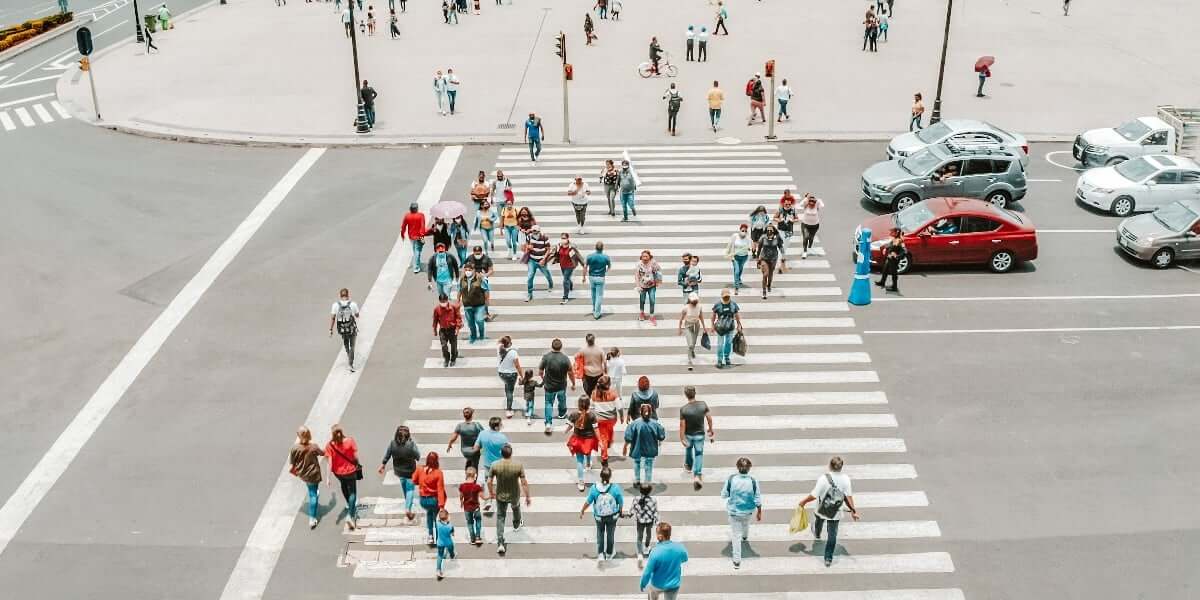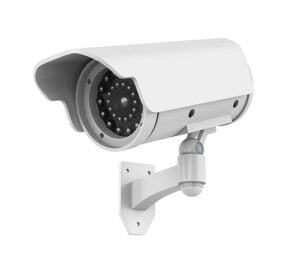5 Ways Smart City Technology Benefits Cities and Residents

Are you tired of traffic congestion, high energy consumption, and inefficient public services?
Imagine a city where technology seamlessly improves every aspect of urban life. This is a reality of smart cities.
With cutting-edge technology, cities transform into efficient, connected, sustainable hubs. Smart cities offer a solution by leveraging data, connectivity, and automation. For example:
- Traffic flows smoothly with intelligent transportation systems.
- Optimised energy consumption, reducing costs and environmental impact.
- Public services become efficient, responsive, and personalised.
- A decrease in crime in your neighbourhood.
- Cleaner air quality and improved health of citizens.
With innovative technology, citizens experience improved quality of life, increased safety, and enhanced convenience.
A growing number of cities are revolutionizing urban living. Keep reading to discover the benefits of a smarter, more connected world.
What Is a Smart City?
A smart city is a tech-driven urban area that improves residents’ lives through data and connectivity. It employs smart infrastructure, sensors, and digital solutions to optimise transportation, energy, healthcare, and waste management services. This creates a sustainable and efficient environment.
5 Benefits of Smart City Technology
Discover the undeniable advantages of smart city technology. Smart cities address infrastructure limitations, service inefficiencies, and environmental concerns by leveraging technology and data.
Experience enhanced safety, streamlined transportation, sustainable energy usage, and personalised services.
Smart city benefits include:
1. Efficient Transportation and Better Traffic Flow
Optimised traffic management systems reduce congestion, improve commuting efficiency, and reduce travel times.
For example, real-time adjustments to public transport routes, intelligent traffic lights, and alerts for off-peak travel reduce congestion.
Smart technology can also alert residents to use public transit during off-hours. In many cities, public transit riders can track their bus or train locations and change routes if needed.
2. Sustainable Energy Usage and Health Improvements
Smart grids and energy management solutions promote efficient energy consumption and renewable energy integration.
As city populations grow, conserving natural resources becomes vital. For example, health and environmentally friendly smart solutions include:
- Effective water and electricity conservation.
- Smart sensors quickly identify leaks in pipes and fix damaged areas.
- LED streetlights adjust or dim based on real-time data.
- Homes equipped with smart energy meters reward residents’ reduced energy consumption.
- Air-quality sensors identify pollution sources and provide actionable steps to reduce emissions.
- Telemedicine and timely health messages promote community well-being.

Air quality tester
3. Improved Public Services
Data-driven insights enhance service delivery, responsiveness, and personalised experiences for residents.
For example, improved public services include:
- Enhanced Service Delivery: Seamless delivery of public services, reducing bureaucratic hurdles and overall efficiency.
- Personalised Experiences: Smart city platforms can offer services based on individual preferences, making interactions with public services more tailored and efficient.
- Proactive Maintenance: Smart sensors and predictive analytics help identify potential issues in public infrastructure. This enables proactive maintenance and reduces service disruptions.
- Increased Accessibility: Assistive technologies and improved digital interfaces make public services more accessible, including individuals with disabilities.
- Citizen Engagement: Citizen engagement through digital platforms allows residents to participate in decision-making processes and provide feedback on services.
- Seamless Interconnectivity: Public services systems, such as transportation, healthcare, and emergency services, enable seamless coordination and improve overall service delivery.
4. Enhanced Safety and Security
Smart city technology enables real-time monitoring and proactive measures to ensure public safety.
Smart city technology like WiFi, IoT, early warning systems, and surveillance cameras can improve resident safety and increase incident response times. For example, smart city solutions include:
- Licence plate recognition, connected crime centers, and body cameras.
- Surveillance camera features like facial recognition, fire, and smoke detection.
- Locking and unlocking doors to help lower the crime risk.

Surveillance camera
5. Infrastructure Improvements
Infrastructure components, including roads, bridges, and buildings, require huge investments to maintain and repair.
Innovative city technology, like predictive analytics, can identify issues before there is a failure. For instance, smart sensors identify structural changes, tilts, or cracks in buildings and bridges.
These sensors then send messages indicating the need for inspections or maintenance. As you can imagine, this helps cities save tax dollars and lives on preventable infrastructure failures.

Strain gauge
Smart City Technology and Solutions
What types of technology help make smart cities “smart?” Here are examples of innovative smart city solutions and technology:
1. Internet of Things (IoT) for Smart Cities
The Internet of Things (IoT) in a smart city connects devices and technology through the Internet. This network enables data collection, analysis, and automation.
IoT smart city devices include sensors, lights, cameras, and meters that collect and analyze data. They help enhance urban services, infrastructure, and quality of life for residents.
2. Smart City Sensors
Smart city sensors collect real-time data to optimise traffic, monitor air quality, manage waste, and enhance our overall urban experience.
Types of sensors include electronic, infrared, thermal, and proximity sensors. For example, common smart city sensors include:
- Environmental Sensors: Measure air quality, temperature, humidity, and noise levels. They help improve urban environmental conditions.
- Energy Consumption Sensors: Measure and analyze energy usage in buildings and infrastructure. They identify energy-saving opportunities and optimise consumption.
- Water Quality Sensors: Monitor water quality parameters in rivers, lakes, and reservoirs. They help ensure a clean water supply and detect pollution incidents.
- Waste Management Sensors: Monitor fill levels of garbage bins and optimise waste collection routes. They help to establish efficient and timely waste management.
- Traffic Sensors: Collect real-time vehicle flow, speed, and congestion data. They help optimise traffic management and reduce congestion.
- Parking Sensors: Detect available parking spaces and provide real-time information to drivers, reducing the time spent searching for parking.
- Noise Sensors: Measure noise levels in urban areas to identify noise pollution hotspots. They help to implement measures for noise reduction.
- Public Safety Sensors: Detect emergencies, such as fires or gunshots, and notify authorities for quick response and enhanced public safety.
- Structural Health Sensors: Monitor the condition of bridges, buildings, and infrastructure to detect potential faults and ensure safety.
3. Artificial Intelligence (AI) in Smart Cities
AI is the simulation of machines designed to mimic human decision-making. For example, AI can count vehicles, pedestrians, or other movements.
AI can also detect faces, read licence plates, and process satellite data. This data helps establish patterns necessary for city planning.
4. Augmented Reality (AR) in Smart Cities
AR allows you to see your real-life environment with digital augmentation. AR technology can enhance smart cities in several ways, including emergency management and disaster preparedness.
For example, AR can provide tips on where to find nearby events, restaurants, retailers, hotels, parking, or transport hubs.
AR can also direct people where to find exits and evacuation points during an emergency.
5. Geospatial Technology for Smart Cities
Geospatial technology for smart cities uses location-based data and mapping tools to analyze, visualize, and manage urban environments.
It enables efficient planning, resource allocation, and decision-making. The results lead to improved infrastructure, services, and quality of life for residents.
For example, geospatial technology can help in emergency response situations to improve commutes and transportation. It can also support public health by mapping and tracking a disease outbreak like COVID-19.
Geospatial tools include:
- WiFi: WiFi is a crucial component of a smart city, connecting devices and sensors wirelessly. It enables location tracking using signals from smartphones and wearables, enhancing navigation and personalised services.
- Bluetooth Low Energy (BLE): A wireless technology in various devices like smartphones, smartwatches, and BLE beacons. These beacons are wireless transmitters that periodically broadcast signals to reveal their location.
- Global Positioning System (GPS): A satellite-based navigation system that provides positioning, navigation, and timing services.
- Ultra-wideband (UWB): A short-range, wireless communication technology that scans radar, locates objects, and establishes communication with them.
These technologies form the foundation of a smart city.
Why Smart City Investment is an Opportunity
Outdated infrastructure, inefficient resource use, and unsustainable practices plague traditional cities. Smart cities offer a solution, leveraging technology for vibrant, efficient, and sustainable communities.
With increasing urbanization, cities have turned to the Internet of Things (IoT) to improve public services, optimise resource allocation, stimulate economic growth, and enhance the quality of life.
These statistics show why smart technology is a lucrative investment opportunity:
- The McKinsey Global Institute found smart city technology can improve key quality of life indicators – cost of living, safety, time, jobs, connectedness, environment, and health by 10-30%.
- Postcapes estimates 1.3 million people move into cities each week.
- Postcapes show cities consume between 60% and 80% of the world’s energy.
- SmartAmerica Challenge predicts U.S. city governments will invest about $41 trillion over the next 20 years to upgrade their infrastructure and implement IoT solutions.
- Grandview Research predicts the global smart cities market will reach nearly $7 trillion by 2030, a CAGR of around 24%.
- Markets & Markets predicts a CAGR of about 19% as the global IoT in smart cities grows to $312.2 billion by 2026.
How Beonic’s Solutions Transform Smart City Technology
Beonic revolutionizes smart city technology by offering a comprehensive suite of tools and solutions tailored for urban environments.
Our smart city solutions harness the power of data analytics, connectivity, and real-time insights to transform how cities operate and serve their residents.
With IO Connect, Skyfii integrates various data sources like WiFi location data, drones, people counters, and AI cameras. These technologies enable cities to gather valuable information on foot traffic, dwell times, and visitor behavior.
IO Insight processes and analyzes this data, delivering actionable insights for improved decision-making and resource allocation.
Beonic also facilitates seamless communication with the public through IO Engage. This technology enables personalised messaging, location-based notifications, and engagement campaigns.
Beonic enables smarter, more efficient, citizen-centric smart city operations by empowering cities with advanced data-driven tools.
Ready to Shape the Future of Your City?
Embrace the power of Beonic’s Smart City Platform and unlock the full potential of smart city technology.
Implementing smart city solutions takes expertise and careful planning to ensure successful adoption. We can help.
With IO Connect, IO Insight, and IO Engage, you’ll gain real-time data, actionable insights, and seamless communication tools. Transform your city into a connected, efficient, and citizen-centric hub.
Imagine optimizing resources, enhancing public services, and creating a sustainable urban environment that improves the lives of your residents.
Take that leap with Beonic and join the global movement of smart cities. Don’t just dream of a smarter future – make it a reality with Skyfii.
Your city awaits its transformation – are you ready to lead the way?
Smart City Technology FAQ
Answers to common questions about smart city technology.
What Is Smart City Technology?
Smart city technology uses advanced digital systems, IoT devices, and data analytics to optimise urban living. It improves efficiency, sustainability, and quality of life through interconnected networks, sensors, artificial intelligence, and data-driven insights.
How Does Smart City Technology Benefit Residents?
Smart city technology benefits residents by improving transportation systems, enhancing safety and security, optimizing resource management, delivering personalised services, and promoting environmental sustainability.
How Can Citizens Participate in Smart City Initiatives?
Citizens can participate in smart city initiatives by actively engaging with city authorities, providing feedback on services, utilizing smart applications and platforms, and participating in community-driven projects that promote innovation and collaboration.